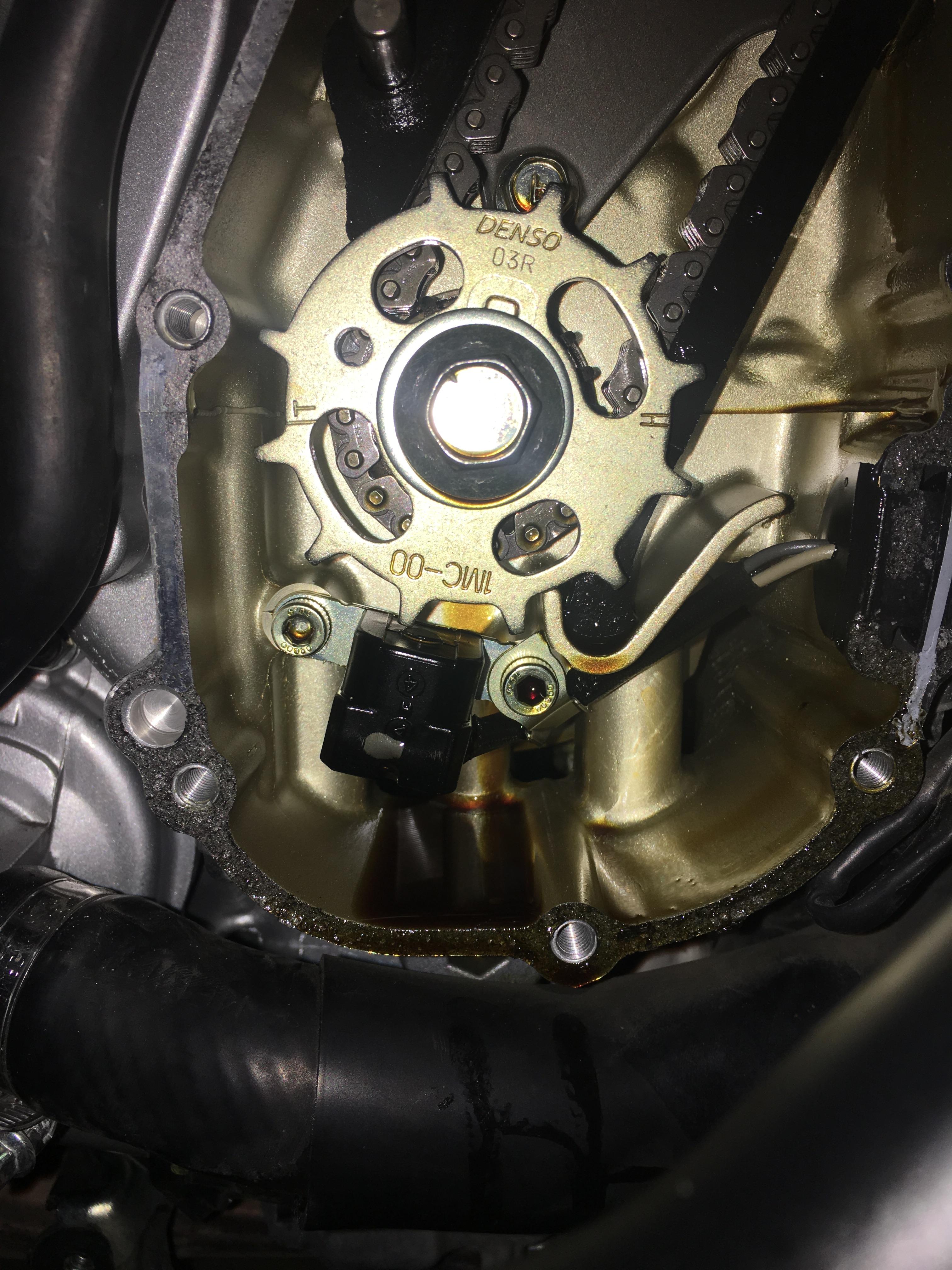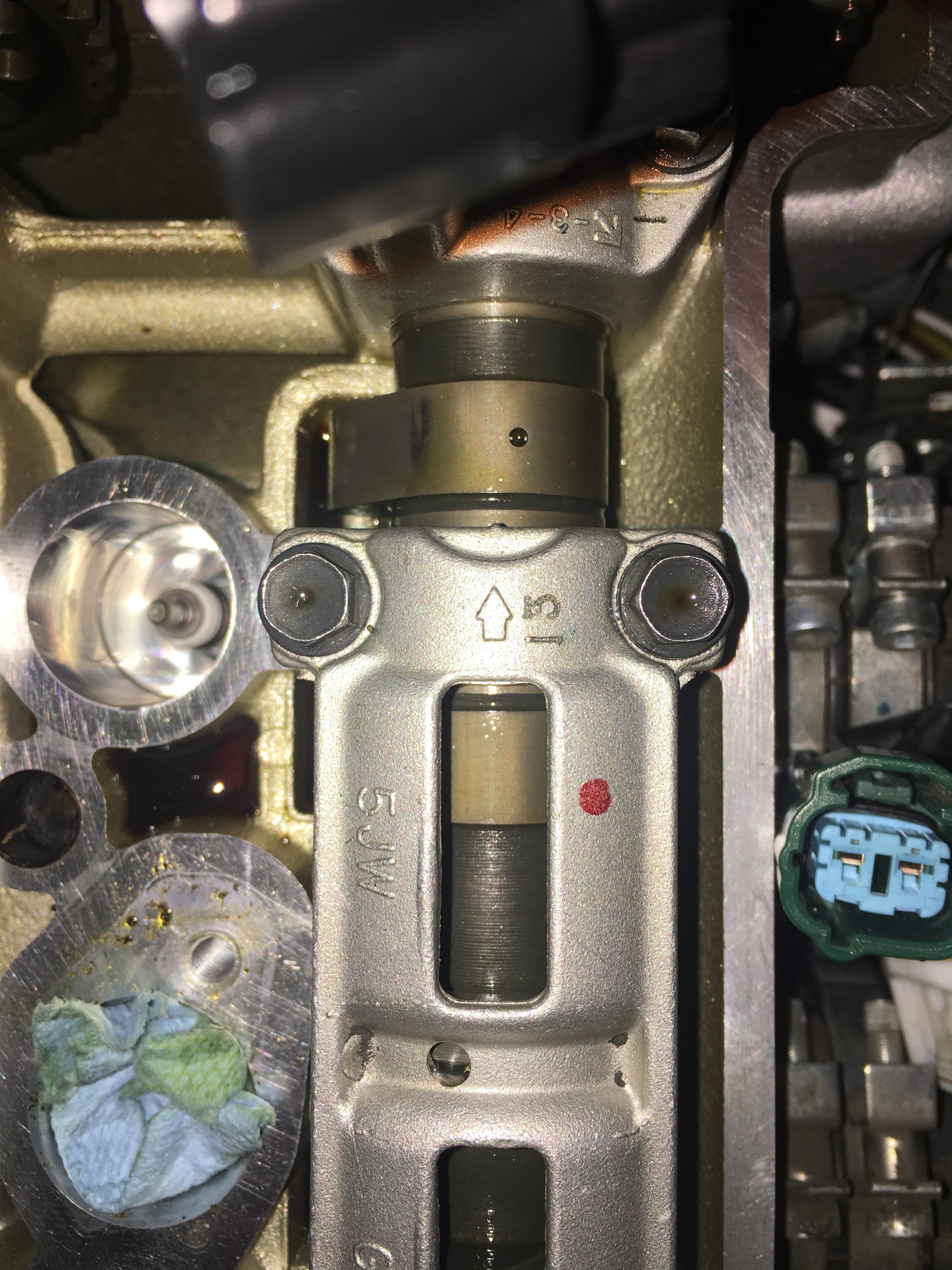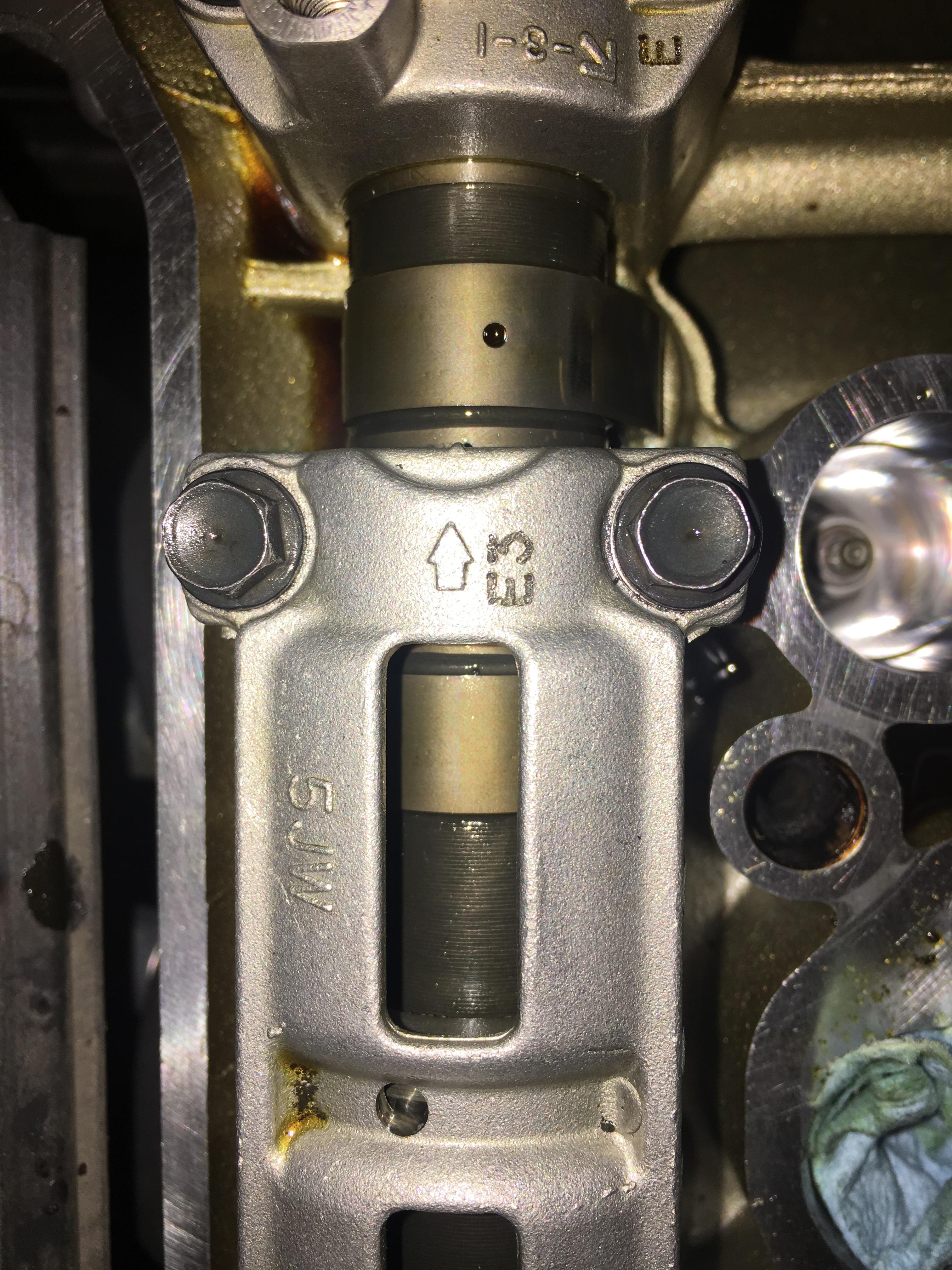pwnsauce
Member
Hey all-
I recently attempted the firstTBS edit: valve adjustment on my 2014 FJR. As expected, the valves were on the tighter end of the tolerance range, and one intake valve was out of spec, so I re-shimmed everything to a bit above the midpoint of clearance. That was the easy part

Now, getting the camshafts back in and timed properly has been the death of me. I'm on my seventh (!!) try to get it right; each time I put the camshafts back in and cinched down, the holes in the top of the camshafts never properly align with the arrow on the camshaft caps. They're always close, but I feel this is a case where close won't cut it. Since I'm doing this work with the engine in the bike, I can't see the timing marks on the camshaft sprockets themselves, so I've had to rely on the holes at the top of the cam lobe.
This is what I end up with:
Timing rotor

Intake camshaft (seems to be retarded a bit):

Exhaust camshaft (also seems to be retarded):

Does that look right, or should I keep trying until everything lines up perfectly? I've noticed the holes on the camshafts will drift a bit as I tighten down the camshaft caps, so it's difficult to get everything to line up and stay lined up.
I recently attempted the first
Now, getting the camshafts back in and timed properly has been the death of me. I'm on my seventh (!!) try to get it right; each time I put the camshafts back in and cinched down, the holes in the top of the camshafts never properly align with the arrow on the camshaft caps. They're always close, but I feel this is a case where close won't cut it. Since I'm doing this work with the engine in the bike, I can't see the timing marks on the camshaft sprockets themselves, so I've had to rely on the holes at the top of the cam lobe.
This is what I end up with:
Timing rotor

Intake camshaft (seems to be retarded a bit):

Exhaust camshaft (also seems to be retarded):

Does that look right, or should I keep trying until everything lines up perfectly? I've noticed the holes on the camshafts will drift a bit as I tighten down the camshaft caps, so it's difficult to get everything to line up and stay lined up.
Last edited by a moderator:



